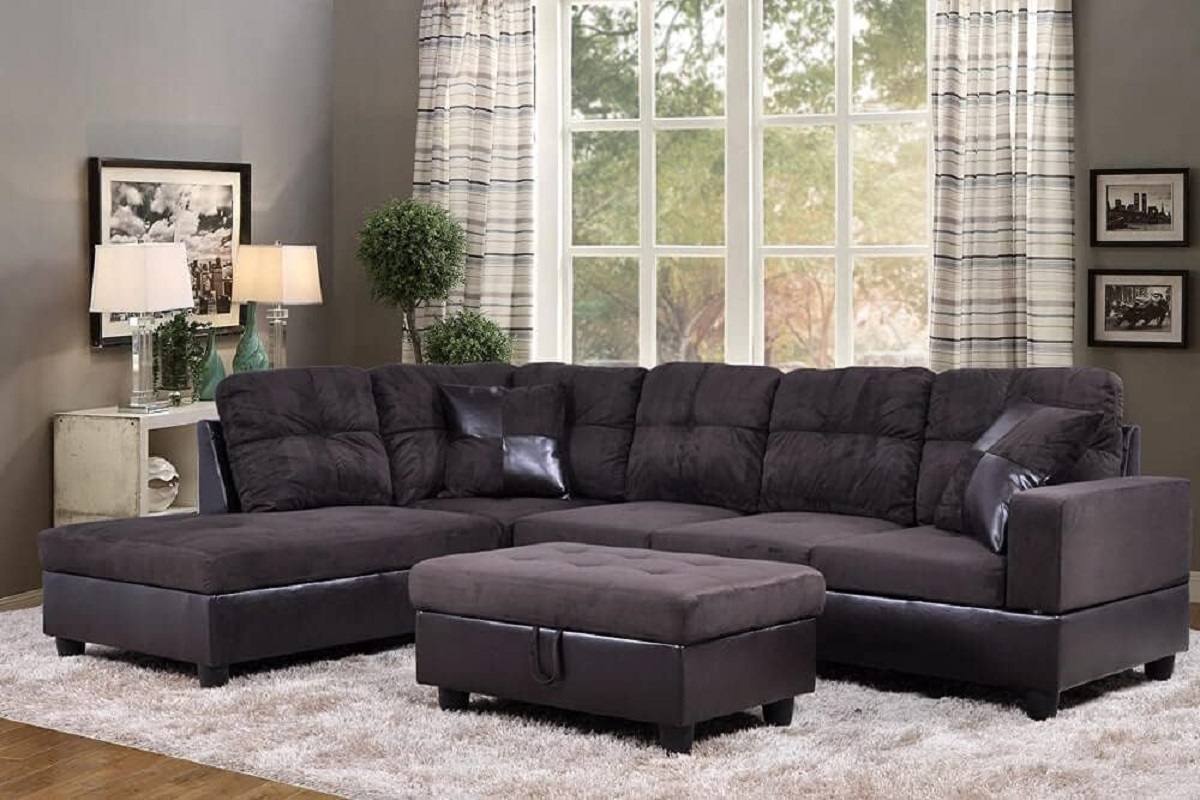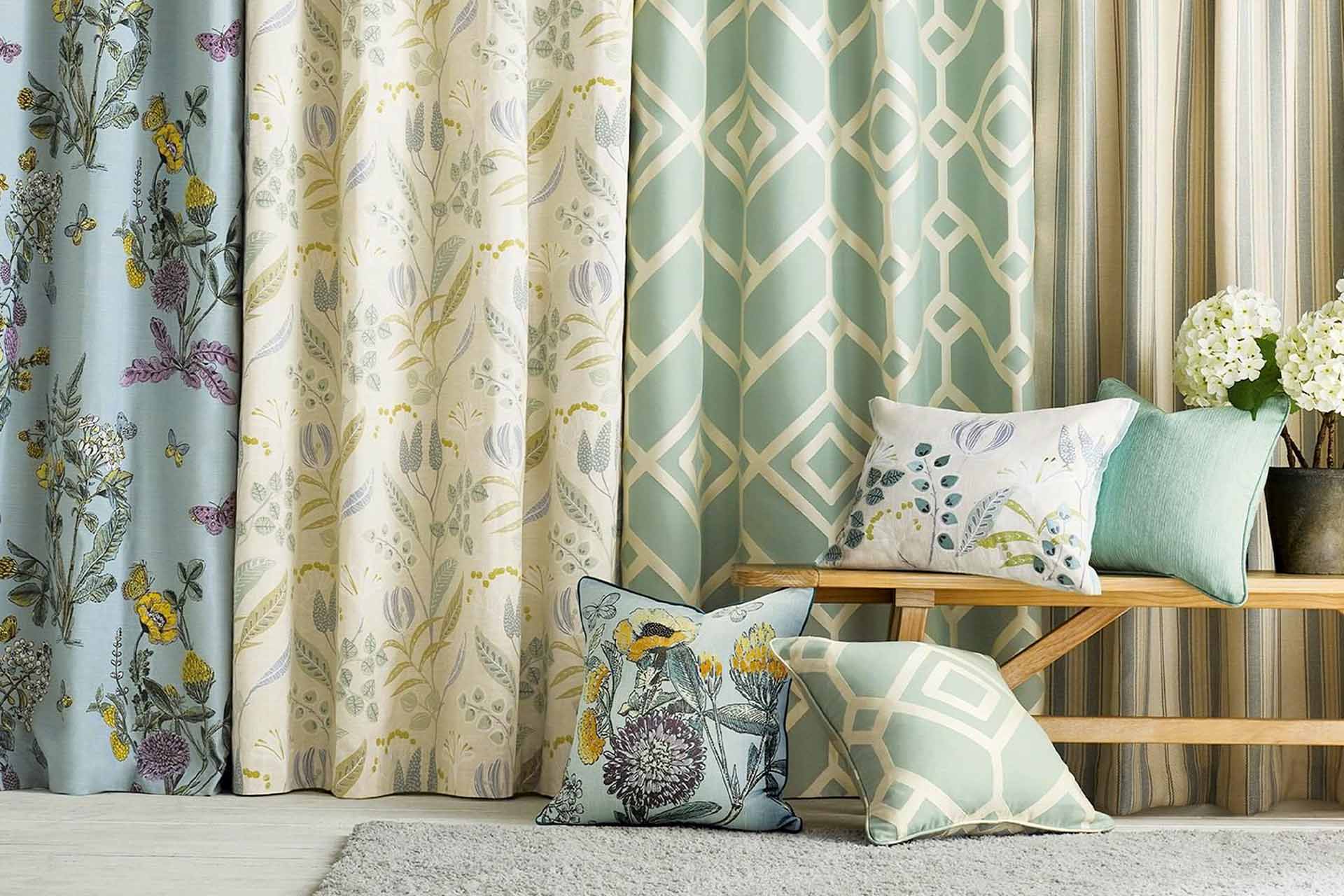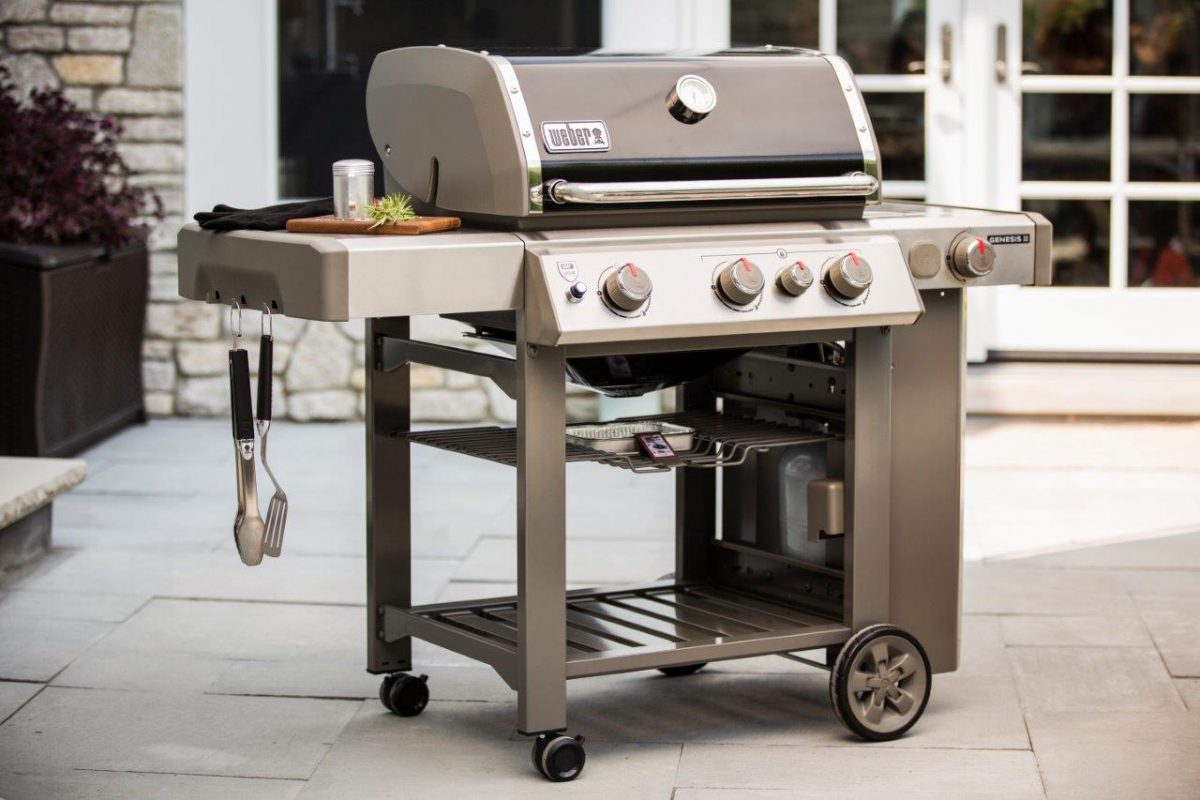

Articles
Why Furniture So Expensive
Modified: September 1, 2024
Looking for affordable furniture? Find out why furniture prices can be so high and learn how to save money on your next purchase.
(Many of the links in this article redirect to a specific reviewed product. Your purchase of these products through affiliate links helps to generate commission for Storables.com, at no extra cost. Learn more)
Introduction
When it comes to furniture, it’s no secret that prices can often be quite high. Whether you’re shopping for a stylish sofa, a sturdy dining table, or a luxurious bed frame, you may find yourself wondering why furniture is so expensive. The truth is, several factors contribute to the high price tags attached to furniture items.
In this article, we will explore the various factors that affect furniture prices and delve into the intricacies of the furniture market. From the quality of materials to the manufacturing processes used, from brand reputation to design and craftsmanship, we will uncover the reasons behind the seemingly hefty price tags.
Additionally, we will dive into the world of furniture markup and retail costs, understanding the expenses involved in distributing furniture, maintaining showrooms, compensating sales staff, and engaging in advertising and marketing efforts.
To give you a broader perspective, we will also discuss the impact of imported furniture on pricing, taking into account factors such as import taxes, shipping costs, and currency exchange rates that can affect the final retail price.
Furthermore, we will examine how demand and supply dynamics influence furniture pricing, exploring trends in consumer demand, the concept of limited supply and exclusivity, as well as the influence of seasonal discounts and sales events.
Moreover, we will explore the value of long-lasting furniture, considering the durability and lifespan of furniture items, as well as their cost per use and potential resale value over time. Understanding the long-term value of furniture can provide insight into how pricing is determined.
Lastly, we will provide some practical tips and strategies for cost-effective furniture shopping. From comparing prices and quality to seeking out discounts and promotions, from considering alternative options to purchasing second-hand or vintage items, and even exploring DIY and upcycling projects, we will share strategies to help you save some money without compromising on style or quality.
So, if you’ve ever found yourself questioning why furniture is so expensive, or if you’re looking for ways to make your furniture shopping experience more economical, keep reading. We’re about to uncover the fascinating world of furniture pricing and provide you with insights that will help you make more informed purchasing decisions.
Key Takeaways:
- Furniture prices are influenced by material quality, manufacturing processes, brand reputation, and sustainability practices. Understanding these factors can help you make informed purchasing decisions and balance quality with budget constraints.
- Long-lasting furniture offers durability, lower cost per use, and potential resale value. Consider comparing prices, seeking discounts, exploring alternative options, and DIY projects to make your furniture shopping more cost-effective.
Read more: Why Is HVAC So Expensive
Factors Affecting Furniture Prices
When it comes to furniture prices, there are several key factors that play a crucial role. Understanding these factors can help explain why some furniture items come with hefty price tags. Let’s dive into the main factors affecting furniture prices:
- Quality of materials: The type and quality of materials used in furniture construction greatly influence its price. High-quality hardwoods, such as oak or walnut, tend to command higher prices than cheaper alternatives like particleboard or plywood. Additionally, specialty materials like genuine leather or natural stone can significantly increase the cost of furniture.
- Manufacturing processes: The way furniture is manufactured also impacts its price. Furniture crafted using traditional, time-consuming techniques can be more expensive due to the amount of skilled labor and craftsmanship involved. Alternatively, mass-produced furniture that undergoes streamlined manufacturing processes tends to have lower price points.
- Brand reputation: Established and reputable furniture brands often carry higher price tags due to their recognition and reputation for quality. These brands invest in research and development, ensuring their products are durable and stylish. The brand’s heritage, customer service, and warranty offerings also contribute to higher prices.
- Design and craftsmanship: Intricate and unique designs, coupled with excellent craftsmanship, can drive up furniture prices. Furniture that features intricate detailing, hand-carved accents, or intricate joinery techniques often requires highly skilled artisans, which can increase production costs and ultimately the price.
- Customization options: Furniture that offers customization options, such as choosing fabric or finish options, tends to have higher prices. Giving customers the ability to personalize their furniture involves additional labor and production processes, resulting in increased costs.
- Sustainable practices: Furniture manufacturers that prioritize eco-friendly and sustainable practices often use responsibly sourced materials and environmentally friendly production processes. These sustainable practices can add to the overall cost of furniture, making it more expensive but appealing to environmentally conscious consumers.
These factors interact and contribute to the final price of furniture items. It’s important to consider which aspects are most important to you when making purchasing decisions, balancing quality, design, customization options, and sustainable practices with your budgetary constraints.
Markup and Retail Costs
Once furniture is manufactured, it goes through several stages before reaching the hands of consumers. These stages include distribution, showroom expenses, sales commissions, advertising, marketing, and profit margins. Let’s explore these markup and retail costs in more detail:
- Distribution and logistics: Furniture manufacturers need to transport their products from factories to retailers or warehouses. This involves costs related to shipping, handling, and storage. These expenses can vary depending on the distance traveled, the size and weight of the furniture items, and the complexity of logistics.
- Showroom expenses: Furniture retailers typically operate physical showrooms where customers can browse and test furniture before making a purchase. These showrooms come with their own set of expenses, including rent, utilities, and maintenance costs. These costs are factored into the retail price of the furniture.
- Sales commissions: Furniture salespeople often work on commission, meaning they earn a percentage of each sale. This incentivizes them to provide excellent customer service and make sales. The sales commissions are accounted for in the retail price, ensuring that the sales team is compensated for their work.
- Advertising and marketing: Furniture brands invest in various marketing strategies to promote their products and reach potential customers. These include advertising campaigns, online marketing, branding efforts, and participation in trade shows or events. These marketing expenses are incorporated into the retail price of furniture.
- Profit margins: Like any business, furniture manufacturers and retailers aim to make a profit. The retail price of furniture includes profit margins that allow businesses to cover their operating costs, invest in research and development, and generate revenue. Profit margins can vary depending on the brand, product, and market conditions.
All of these markup and retail costs add up and contribute to the final price of furniture. It’s important to remember that while these costs may seem high, they are necessary for businesses to operate efficiently and continue providing high-quality products to customers.
Understanding these costs also helps explain why you may find variations in pricing from different retailers, as they may have different strategies for managing these expenses and determining their profit margins. So, when comparing furniture prices, it’s essential to consider the overall value, including factors like quality, customer service, and after-sales support.
Impact of Imported Furniture
The global furniture market is heavily influenced by imported furniture. Importing furniture from other countries can introduce additional costs that impact the final retail price. Let’s explore some of the key factors that contribute to the cost of imported furniture:
- Import taxes and tariffs: When furniture is imported from one country to another, it is subject to import taxes and tariffs imposed by the importing country. These additional costs can significantly increase the price of imported furniture and vary depending on the type of furniture and the country of origin.
- Shipping and transportation costs: Importing furniture involves shipping and transportation expenses. Furniture items are often bulky and require special packaging and handling. The cost of shipping, including freight charges, insurance, and customs clearance, can impact the overall cost of imported furniture.
- Currency exchange rates: The value of currencies fluctuates, and exchange rates play a crucial role in the pricing of imported furniture. If the currency of the exporting country strengthens against the currency of the importing country, it can result in higher prices for consumers. Currency fluctuations can impact the cost of raw materials, manufacturing, and transportation, influencing the final retail price.
These factors are essential considerations when purchasing imported furniture. Import taxes and tariffs can significantly affect the price, so it’s crucial to be aware of any additional costs associated with importing. Shipping and transportation costs should also be taken into account when comparing prices, as they can vary based on the distance traveled and the shipping method used.
Additionally, currency exchange rates can have a considerable impact on the final retail price of imported furniture. It’s essential to keep an eye on exchange rate fluctuations and consider the potential impact on pricing when making purchasing decisions.
Despite these additional costs, importing furniture can provide access to a wider range of styles, designs, and craftsmanship from different parts of the world. It allows consumers to choose from a diverse selection of furniture options, each with its own unique appeal.
Ultimately, the impact of imported furniture on pricing varies depending on several factors. It’s essential to consider all these factors when comparing prices and determining the overall value and suitability of imported furniture for your needs and preferences.
Consider the materials used, craftsmanship, and brand reputation when evaluating furniture prices. Quality materials and skilled labor contribute to higher costs, while well-known brands may also command a premium.
The Role of Demand and Supply
Consumer demand and supply dynamics play a significant role in determining furniture prices. Understanding how these factors influence the market can provide valuable insights into the pricing of furniture items. Let’s explore some of the key aspects of demand and supply:
- Consumer demand trends: Consumer preferences and trends greatly impact the pricing of furniture. When certain styles, materials, or designs are in high demand, furniture manufacturers may charge higher prices. The law of supply and demand dictates that as demand increases, prices tend to rise.
- Limited supply and exclusivity: Furniture items that are limited in quantity or have an exclusive appeal often come with higher price tags. Some furniture manufacturers release limited editions or collaborate with renowned designers, creating a sense of exclusivity and rarity that justifies higher prices.
- Seasonal discounts and sales: Like many other industries, the furniture market offers seasonal discounts and sales events. During certain times of the year, furniture retailers may offer promotions, clearance sales, or discounted prices to attract customers. These discounts and sales can provide opportunities to purchase furniture at lower prices.
Consumer demand trends can shift throughout time, driven by factors such as fashion trends, interior design influences, and changing consumer preferences. It’s not uncommon for certain furniture styles or materials to experience surges in popularity, which can impact their pricing. For example, if mid-century modern furniture becomes highly sought after, prices for those styles may increase due to increased demand.
Additionally, limited supply and exclusivity can contribute to higher furniture prices. Items that are produced in limited quantities or have a unique design or craftsmanship can evoke a sense of rarity, making them more desirable to customers willing to pay a premium for exclusivity.
Lastly, seasonal discounts and sales events can impact furniture prices. During holidays or specific times of the year, retailers may offer discounts and promotions to attract customers. These sales opportunities can provide significant savings for consumers looking to purchase furniture at a lower price point.
Understanding the role of demand and supply in the furniture market can help you make informed purchasing decisions. Whether you’re after the latest trends, seeking exclusive options, or keeping an eye out for seasonal promotions, being aware of these dynamics can help you navigate the market and find furniture that meets your needs and budget.
Read more: Why Are Rugs So Expensive
The Value of Long-lasting Furniture
When it comes to furniture, the value extends beyond the initial purchase price. Long-lasting furniture offers several benefits that can make it worth the investment. Let’s explore some of the factors that contribute to the value of durable furniture:
- Durability and lifespan: Long-lasting furniture is built with high-quality materials and superior craftsmanship, resulting in increased durability and a longer lifespan. Furniture that can withstand everyday use, as well as the test of time, requires fewer repairs or replacements, ultimately saving you money in the long run.
- Cost per use: Evaluating furniture based on its cost per use can provide valuable insight into its true value. While durable furniture may come with a higher price tag initially, if it lasts for many years and is used frequently, the cost per use becomes more affordable compared to cheaper, but less durable, alternatives.
- Resale value: Long-lasting furniture tends to hold its value better over time. If you decide to upgrade your furniture or change your style, being able to sell your used furniture for a significant portion of its original price can help offset the cost of new purchases. High-quality, timeless pieces often have a market demand, making them attractive to potential buyers.
Investing in durable furniture may require a larger upfront investment, but it can help you save money and maintain a beautiful and functional living space in the long term. By opting for well-made furniture, you can avoid the need for frequent replacements and repairs, which can incur additional costs.
Considering the cost per use is an essential perspective to evaluate the value of furniture. While it may seem tempting to opt for cheaper options initially, if these items wear out quickly or need constant repairs, their overall cost per use may end up being higher compared to investing in higher-quality pieces from the start.
Furthermore, long-lasting furniture holds its value, making it a worthwhile investment. As mentioned, if you decide to sell or upgrade your furniture down the line, having pieces that retain their quality and appeal can help you recoup a portion of your initial investment. This resale value is often higher for durable and sought-after furniture items.
So, when assessing the value of furniture, it’s important to consider the long-term benefits of durability, cost per use, and potential resale value. By opting for long-lasting furniture, you not only enjoy the benefits of quality and longevity but also make a more sustainable and economically sound choice.
Tips for Cost-effective Furniture Shopping
When it comes to furniture shopping, there are several strategies you can employ to make the process more cost-effective. By being savvy and creative, you can find furniture that meets your needs and budget. Here are some tips to help you save money:
- Compare prices and quality: Before making a purchase, take the time to compare prices from different retailers. Look for similar furniture items and compare their prices and quality. This will help you find the best value for your money without compromising on quality.
- Look for discounts and promotions: Keep an eye out for discounts, clearance sales, and promotions offered by furniture retailers. Many stores offer seasonal or holiday sales where you can find furniture at discounted prices. Sign up for newsletters or follow retailers on social media to stay informed about sales and special offers.
- Consider alternative options: Instead of purchasing brand-new furniture, consider alternative options. You may find furniture at lower prices by exploring online marketplaces, outlet stores, or even local craftsmen who offer custom-made furniture at more affordable rates.
- Buy second-hand or vintage: Buying second-hand or vintage furniture can be an excellent way to save money. Attend local estate sales, thrift stores, or browse online platforms specializing in used furniture. You might discover unique, high-quality pieces at a fraction of the cost of new furniture.
- DIY and upcycling projects: If you’re feeling creative, consider embarking on a do-it-yourself (DIY) or upcycling project. Repurposing old furniture, refinishing surfaces, or adding new upholstery can breathe new life into worn-out pieces. Not only will you save money, but you’ll also have a customized and unique furniture item.
By implementing these tips, you can make your furniture shopping experience more cost-effective. Comparing prices and quality ensures you get the best value for your money, while looking for discounts and promotions helps you take advantage of sales events. Exploring alternative options, such as buying second-hand or considering DIY projects, can significantly lower your furniture expenses while providing you with unique and sustainable pieces.
Remember, cost-effective furniture shopping is not just about finding the cheapest options but finding the best value within your budget. By being resourceful and open-minded, you can furnish your home with beautiful, functional, and affordable furniture.
Conclusion
Furniture prices can sometimes seem daunting, but by understanding the factors that contribute to their costs, you can make more informed purchasing decisions. Factors such as the quality of materials, manufacturing processes, brand reputation, design and craftsmanship, customization options, and sustainable practices all influence the pricing of furniture.
In addition to the production costs, the markup and retail costs, including distribution and logistics, showroom expenses, sales commissions, advertising and marketing, and profit margins, affect the final price you see on the showroom floor.
Imported furniture brings additional costs such as import taxes, shipping expenses, and currency exchange rates into play. Demand and supply dynamics also influence pricing, with consumer demand trends, limited supply and exclusivity, and seasonal discounts and sales all impacting the market.
However, it’s essential to consider the value of long-lasting furniture. Furniture with durability and a longer lifespan can save you money in the long run, with lower cost per use and potential resale value. Investing in quality pieces not only provides functional benefits but also contributes to a more sustainable lifestyle.
To make your furniture shopping more cost-effective, consider comparing prices and quality, looking for discounts and promotions, exploring alternative options like buying second-hand or repurposing furniture, and even taking on DIY projects. These strategies can help you save money without compromising on style or quality.
In conclusion, furniture prices are influenced by a range of factors, and understanding them can empower you to make smarter choices when furnishing your home. By considering the value, quality, and longevity of furniture, and employing cost-effective shopping techniques, you can create a beautiful and functional living space without breaking the bank.
Frequently Asked Questions about Why Furniture So Expensive
Was this page helpful?
At Storables.com, we guarantee accurate and reliable information. Our content, validated by Expert Board Contributors, is crafted following stringent Editorial Policies. We're committed to providing you with well-researched, expert-backed insights for all your informational needs.















0 thoughts on “Why Furniture So Expensive”